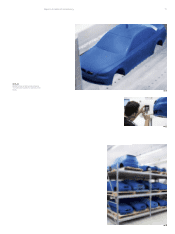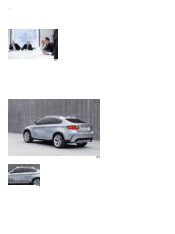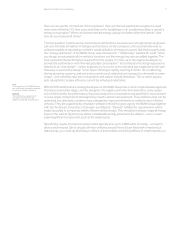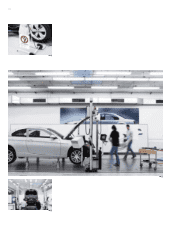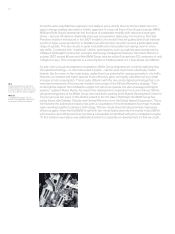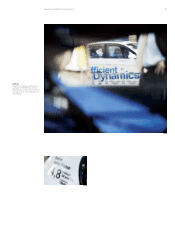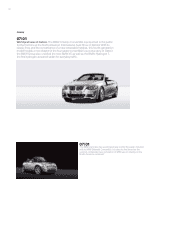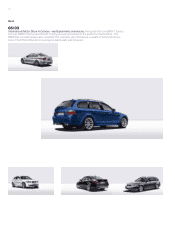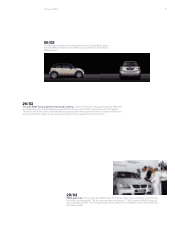BMW 2007 Annual Report Download - page 222
Download and view the complete annual report
Please find page 222 of the 2007 BMW annual report below. You can navigate through the pages in the report by either clicking on the pages listed below, or by using the keyword search tool below to find specific information within the annual report.
22
In just the same way that their engineers now analyse every vehicle down to the last detail, the com-
pany’s energy strategy also takes a holistic approach. It covers all three of the Group’s brands: BMW,
MINI and Rolls-Royce; reaches far into the future of sustainable mobility with hybrid and hydrogen
drives – and yet still delivers drastically improved consumption data today. For instance, the High
Precision Injection introduced in the 2007 models is the world’s first jet-guided direct fuel injection
system in large-series production to facilitate fuel-efficient lean operation across a particularly wide
range of speeds. This also results in quite noticeable and measurable fuel savings even in every-
day traffic. Combined with traditional vehicle optimisations such as sophisticated aerodynamics,
intelligent lightweight construction concepts, and energy management features, this means that since
autumn 2007 around 40 percent of the BMW Group vehicles sold in Europe have CO2 emissions of only
140 g/km or less. This corresponds to a consumption of 5.8 litres petrol or 5.1 litres diesel over 100 km.
As part of an unusual development cooperation, BMW Group engineers are currently exploring how
the hybrid technology – so often discussed in public – can be used much more effectively. Classic
hybrids, like the ones on the roads today, realise their true potential for savings primarily in city traffic.
However, at constant and higher speeds those efficiency gains are largely cancelled out by a sharp
increase in fuel consumption. That is quite different with the two-mode hybrid technology that is an
important component of the second, medium-term phase of the EfficientDynamics strategy: Two-
mode hybrids support the combustion engine not just at low speeds, but also at average and higher
speeds, explains Rainer Rump. As head of the development cooperation he is one of about 100 de-
velopment engineers at the BMW Group who have been working at the Hybrid Development Center in
Troy for just over two years. In this Detroit suburb in the US state of Michigan the BMW Group has
joined forces with Daimler, Chrysler and General Motors to form the Global Hybrid Cooperation. This is
the first time the automotive industry has seen a cooperation of this kind between four major manufac-
turers working together to advance technology. The two-mode drive train also promises impressive
efficiency gains: when the first BMW model with two-mode hybrid drive hits the market in late 2009 it
will consume up to 20 percent less fuel than a comparable model fitted with just a combustion engine.
In this instance we made a very deliberate decision to cooperate on development so that we could
== 1
Using High Precision Injection
petrol engines can produce con-
sumption figures which only used
to be possible for diesel engines.
== 2 – 3
The BMW Hydrogen 7 is the
world’s first premium sedan with
hydrogen combustion engine.
== 1





